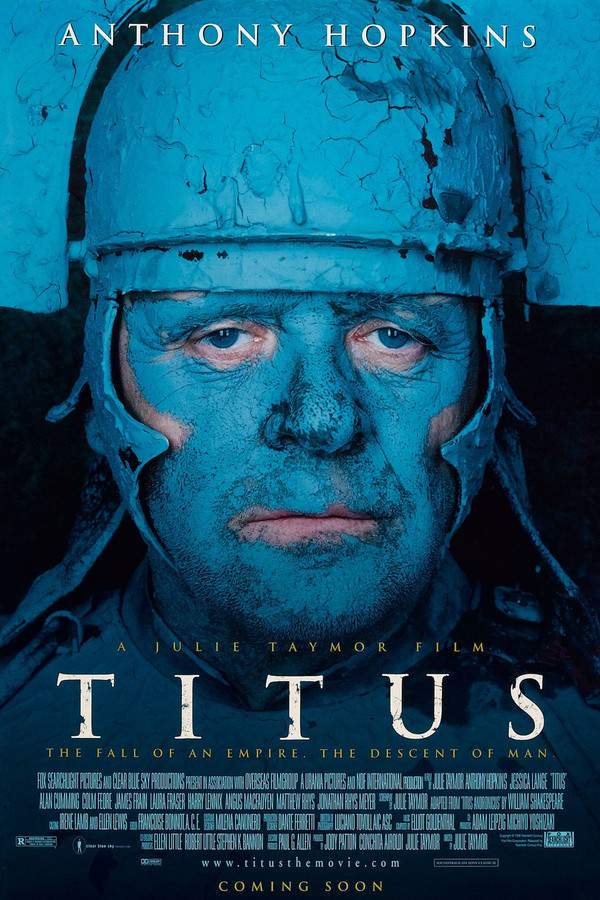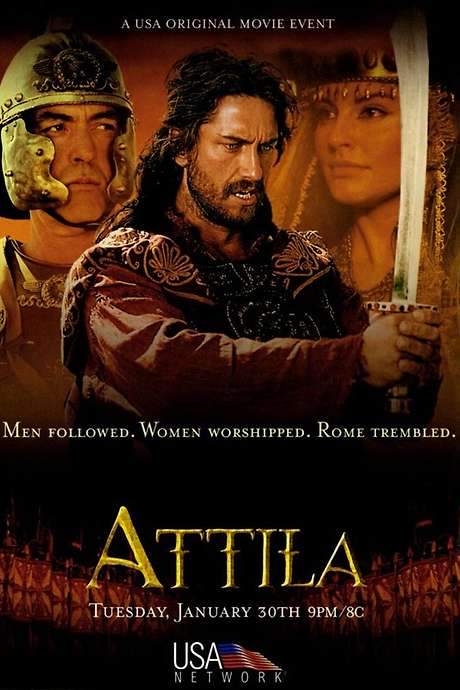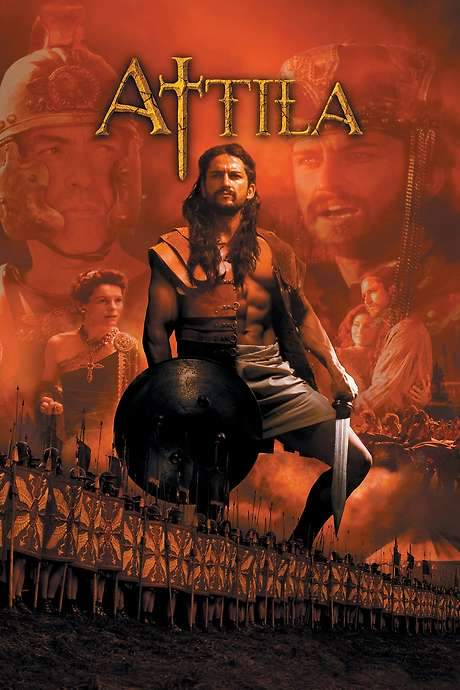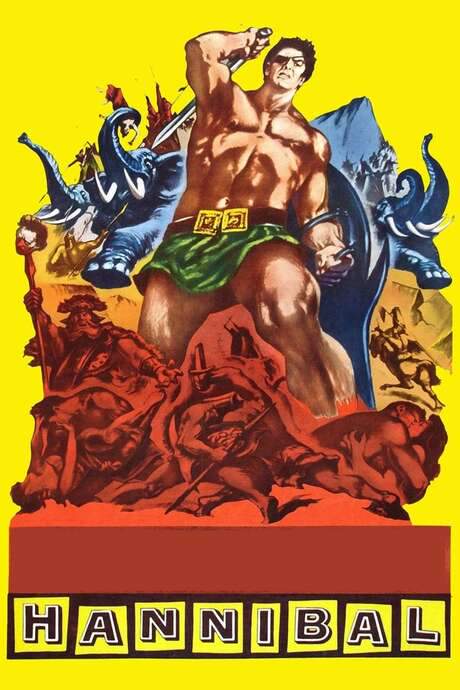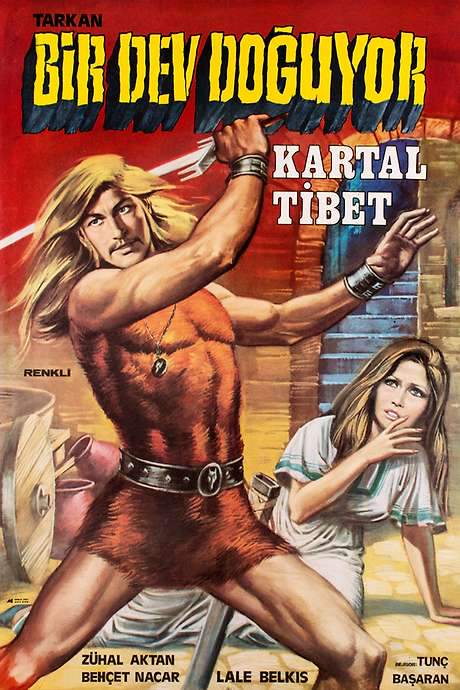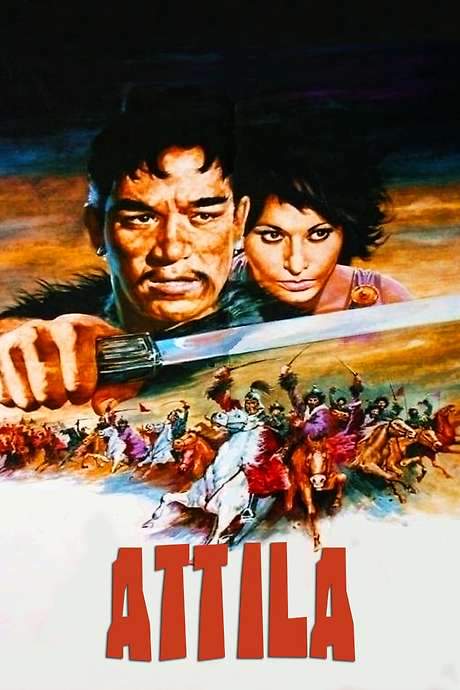
Attila
Year: 1954
Runtime: 79 mins
Language: Italian
Director: Pietro Francisci
Attila, the feared leader of the Huns—dubbed “the Scourge of God” by the Romans—leads his hordes from the Asian steppes into Italy, clashing head‑on with the proud Roman legions. Their relentless advance sweeps aside every Roman army they meet, ending with the Hun force standing at the very gates of Rome.
Warning: spoilers below!
Haven’t seen Attila yet? This summary contains major spoilers. Bookmark the page, watch the movie, and come back for the full breakdown. If you're ready, scroll on and relive the story!
Attila (1954) – Full Plot Summary & Ending Explained
Read the complete plot breakdown of Attila (1954), including all key story events, major twists, and the ending explained in detail. Discover what really happened—and what it all means.
Set in the late Roman Empire, the narrative grips you as a powerful clash of cultures and ambitions unfolds across 450-452 AD. The Huns, a fierce horde sweeping in from the Asian plains, press toward the wealthy western lands under the ruthless leadership of Attila Anthony Quinn. His name alone signals fire and thunder, a force that believes in conquest as a divine mission, and the surrounding world trembles at the prospect of facing him. Beside him, his brother Bleda Ettore Manni treads a more tempered line, advocating peace and balance, hinting at a split destiny within the Hun leadership.
On the Roman side, Flavius Aetius is the only man who has walked in both worlds. The Roman general, a man marked by years as a hostage among the Huns, carries an uneasy mandate from the aging Emperor Valentinian III to the Hun king Rua Christian Marquand. The political landscape is a tangle: Ravenna is a palace of party and decadence, while the state itself crumbles under neglect. Valentinian III, a child-king in name, is more preoccupied with feasts and theatrics than with the practical matters of an empire fraying at the edges. His mother, Galla Placidia Colette Régis, acts as the de facto ruler, trying to stitch together fragile loyalties before the empire collapses into chaos. Into this maelstrom steps Honoria Sophia Loren, Valentinian’s sister and a restless spirit who seeks to topple the old guard and seize control, seeking Aetius’s support to execute a coup. Yet Aetius remains bound by a solemn oath to serve the Empire, even at great personal cost, and refuses to swap loyalty for power, which earns him both respect and danger as he’s stripped of rank by the very leaders he serves.
Aetius’s return to Ravenna marks a turning point as the two great powers collide. The Huns, led by Attila’s uncompromising vision, push forward with a brutal display of force, while the Romans summon their legions to block the advance. The two camps collide on open plains before spilling into the Hun camp itself, a brutal dance of arrows, countercharges, and tactical feints. The battle is not merely a clash of metal and muscle but a clash of ideas: the Hun hunger for expansion against Rome’s stubborn hold on a crumbling world. In a decisive moment during the hunt that ushers in Attila’s sole rule, Bleda is slain when Attila orders his own bodyguard to unleash arrows at the pairs of leaders, a terrible revelation that hardens the Hun king and deepens the rift within his ranks.
As the Roman lines falter, Honoria slips away from the imperial court and seeks out the Hun camp, drawn by a dangerous mix of ambition and desperation. The tide of the war turns as the battle moves from a frontal assault to a more fluid struggle that spills into the heart of the Hun’s own encampment. The fate of the legions hinges on daring choices and brutal calculations, and the Romans find themselves fighting for survival rather than victory. Amid the carnage, a fateful moment arrives when Honoria is discovered in a nomad’s cart within the Hun lines and is killed, a brutal reminder of how fragile life and loyalty can be in such a volatile campaign.
The end of the immediate conflict comes with a devastating blow: Aetius is felled by an arrow through the neck, and the Roman resolve buckles as their leaders fall and fear takes hold. The survivors retreat, the Hun encampment burns, and the battlefield becomes a graveyard for a once-formidable army. The tragedy continues as Attila, already a conqueror with an unyielding spirit, learns of his own son Bleda’s death, a wound that leaves him emotionally unsettled and questioning the cost of endless bloodshed. The once indisputable conqueror begins to glimpse the price of bloodshed and the human cost of empire.
On the road toward Rome, Attila’s forces encounter a procession led by Pope Leo I, a moment that contrasts starkly with the brutality that preceded it. In a quiet conversation that unfolds in a stream’s shallow water, the Pope speaks with a calm authority that unsettles the Hun leader. “You can kill everybody…old people, women, children…” the Pope notes, and the implied judgment lingers in Attila’s mind. The words, spoken as a haunting echo, remind him that violence often returns as a boomerang. It is in this encounter that Attila experiences a turning point; a surge of conscience, a dawning realization that the path of conquest may not offer the lasting glory he imagined. The disembodied memory of his murdered brother Bleda surfaces, and the great warrior suddenly chooses a different course.
With the weight of that moral reckoning bearing down on him, Attila turns away from the gates of Rome and directs his horde back toward the Alps, choosing not to unleash destruction on a city that would suffer for generations to come. The journey becomes, in a sense, a pilgrimage from ruthless ambition to restraint, a transformation sparked by a moment of clarity in the harshest of landscapes. The encounter with the Pope leaves an indelible impression, a rare moment of mercy that reshapes a warlord’s destiny and the fate of two great empires.
In this sweeping film, the performances—woven together with political intrigue, battlefield ferocity, and moral crisis—paint a vivid portrait of an era defined by the collision of power and conscience. The story honors both the grandeur and the fragility of civilizations caught between tradition and tumult, showing how men like Attila and Aetius shape history not only through swords and strategy but through choices that echo far beyond the moments of battle. The clash culminates in a quiet decision that alters the course of Rome’s fate and casts a long shadow over the saga of the Hun and the empire they sought to mold in their image.
Last Updated: October 05, 2025 at 12:06
Unlock the Full Story of Attila
Don't stop at just watching — explore Attila in full detail. From the complete plot summary and scene-by-scene timeline to character breakdowns, thematic analysis, and a deep dive into the ending — every page helps you truly understand what Attila is all about. Plus, discover what's next after the movie.
Attila Timeline
Track the full timeline of Attila with every major event arranged chronologically. Perfect for decoding non-linear storytelling, flashbacks, or parallel narratives with a clear scene-by-scene breakdown.

Similar Movies to Attila
Discover movies like Attila that share similar genres, themes, and storytelling elements. Whether you’re drawn to the atmosphere, character arcs, or plot structure, these curated recommendations will help you explore more films you’ll love.
Explore More About Movie Attila
Attila (1954) Scene-by-Scene Movie Timeline
Attila (1954) Movie Characters, Themes & Settings
Attila (1954) Spoiler-Free Summary & Key Flow
Movies Like Attila – Similar Titles You’ll Enjoy
Titus (1999) Film Overview & Timeline
Attila (2001) Plot Summary & Ending Explained
Hannibal: Rome’s Worst Nightmare (2006) Complete Plot Breakdown
Attila (1000) Full Summary & Key Details
Attila Scourge of God (1982) Story Summary & Characters
The Dacians (1967) Ending Explained & Film Insights
Sign of the Pagan (1954) Complete Plot Breakdown
The Conquest (1996) Ending Explained & Film Insights
Massacre in the Black Forest (1967) Detailed Story Recap
Giants of Rome (1964) Film Overview & Timeline
Hannibal (1959) Full Summary & Key Details
Tarkan (1969) Film Overview & Timeline
Brennus, Enemy of Rome (1963) Complete Plot Breakdown
The Technique and the Rite (1972) Ending Explained & Film Insights
Barbarossa (2009) Plot Summary & Ending Explained



